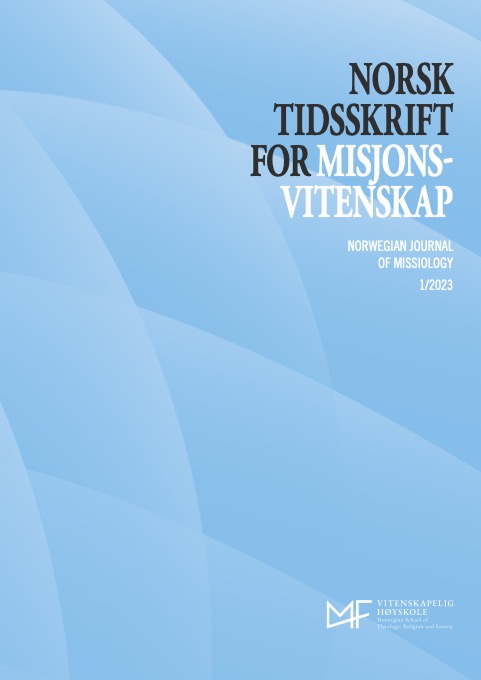Från Japan till Kenya
SLEF:s missionsarbete som gränsöverskridande kraft
DOI:
https://doi.org/10.48626/ntm.v77i1.5535Sammendrag
The article examines the mission work of the Swedish Lutheran Evangelical Association in Finland (SLEF) as a cross-border force from the 19th century into the 1960s. Of particular interest is the home front's transition from supporting the association's mission work in Japan to, from 1963, supporting mission work in Kenya. The entry of the Kenya mission into SLEF in 1963 had transformative effects on the home front. The reason must be sought in the association's strong mission interest, combined with the need to express its identity. During the 20th century, missionary work had been carried out in Japan together with SLEF's sister organization, Lutheran Evangelical Association in Finland (LEAF). The collaboration was felt to give SLEF's people too little leeway. With its new mission "eld in Kenya from 1963, SLEF got its independent mission work. It had a particularly favorable e!ect on the mission's home front and the association's mission work. The drive for missionary work had partly a theological, partly and above all, an identity-related side. It is clear that these two factors, the theology and one's own identity, created the missionary interest in SLEF. The need for independent mission work pushed SLEF into new mission fields, starting from the 1940s. The triggering factor was the closed doors in Japan at the end of the 1950s and the external call, which the association received shortly afterwards from Kenya.
Nedlastinger
Statistikk
Nedlastinger
Publisert
Utgave
Seksjon
Lisens
Opphavsrett 2023 Norsk tidsskrift for misjonsvitenskap

Dette verket er lisensiert under Creative Commons Attribution-NonCommercial-NoDerivatives 4.0 International License.
Norsk Tidsskrift for Misjonsvitenskap er i dag et digitalt tidsskrift som er tilgjengelig gratis for alle. Artikler gjøres offentlig tilgjengelige med en såkaldt Creative Commons lisens CC BY-ND på tidsskriftets hjemmeside. Dette innebærer at alle står fritt til å gjenbruke artikkelen under forutsetning av at opphavspersonen blir navngitt.





